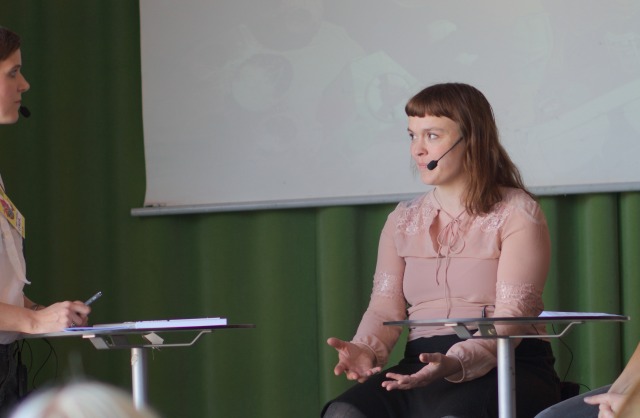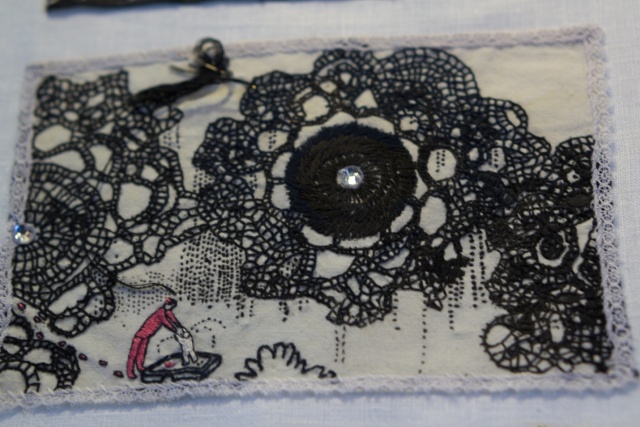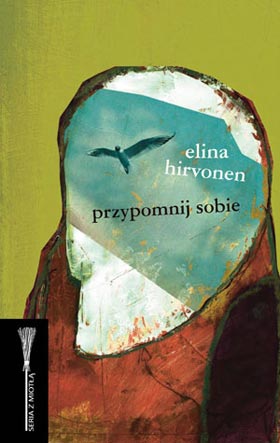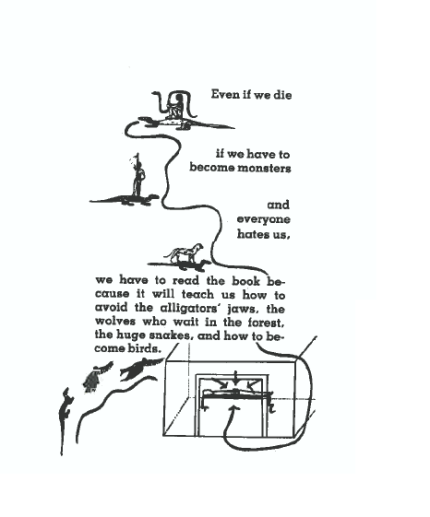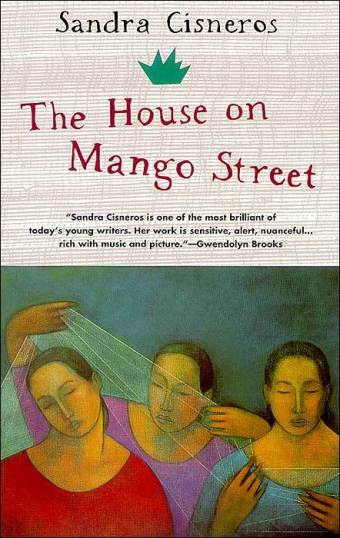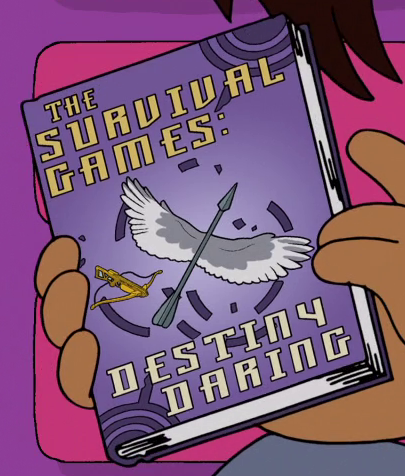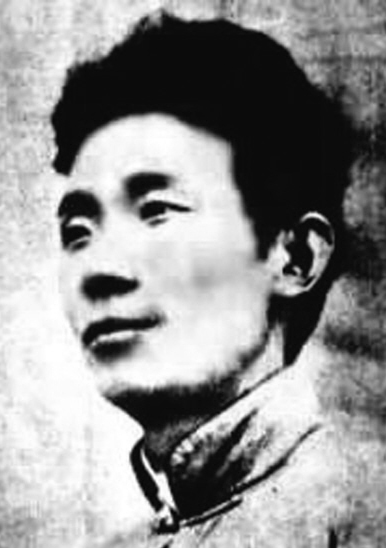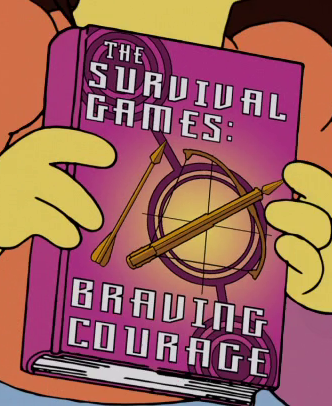Over at the YouTube Channel “Screenjunkies” there was a lively discussion about film adaptations, regarding a panel discussion of what were the most and least well made adaptations of comic genre and, its close companion, the Graphic novel*. The video panel discussion ended with a question to the viewers regarding what comic/graphic novel they would most like to see get adapted to film. After pondering this question for a while, I came to the conclusion that only naming a few would not be fair, since, within the entire history of Alternative Comics, some truly remarkable stories have been told, and, in their breathtaking and compelling sweep of ideas and vision, would lend themselves well to a big screen incarnation.
1.“Shortcomings” by Adrian Tomine: A cynical look on race, Tomine’s masterpiece centers on the unsympathetic Ben. His girlfriend Miko accuses him often of being ashamed of his Japanese heritage, which she in returned is extremely proud of. She also accuses him of having an obsession with white women, which Ben laughs at. However, once Miko decides to leave for New York for a couple of months, Ben decides to replace Miko with a white woman (proving Miko´s discomfort to be accurate). When all does not go as planned, Ben flies to New York to meet Miko and becomes obsessively jealous when it turns out Miko is dating someone else.

“Shortcomings” is about flawed people engulfed in a racist society, mixing character study with harsh social commentary. Ben in his hypocrisy claims he does not want to be a victim, but simultaneously has become so unlikeable and hypocritical because of the white supremacist emasculation of Asian men. Miko has her own prejudices as well, but ultimately finds empowerment in her pride. The comic also addresses race fetishazation, and explores the myth of White normativety as desirable. A film adaption that would also include the comic’s social commentary would be a brave move, but no doubt an ultimately enjoyable film.

Cover of “Shortcomings”
2. “X-Day 1&2” by Setona Mizushiro: This manga is famous among those who like their manga and anime more close to “real life”. The plot centers around three students and one teacher who due to personal difficulties, decide, via an internet chat room, to blow up the school they attend and work at. The biology teacher, using the pseudonym “Jangalian”, due to being stalked by the principals daughter; is engulfed in a sense of powerless exasperated by the unending claims of the school’s principal that Jangalian has slept with his out of control daughter (he hasn´t). The school principle continually foists the blame for her behavior on the victimized Jangalian. Mr. Money, a male student, has an abusive mother. 11, a former popular athlete, is entrapped in the insecurity that other women continually strip her of boyfriends and friends, and Polaris is crippled by shyness unless she wears gothic Lolita clothes, which the school prohibits.
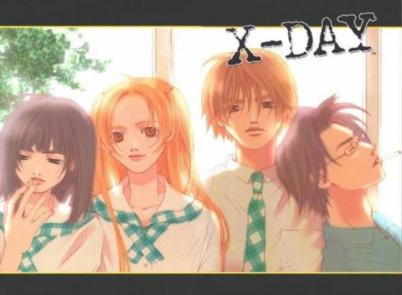
While the beginning of this Manga feels like it will be a dark terror story, the four start to reach out to each other and common bound circumventing the planning the attack through friendship. Mizushiro doesn´t shy away from depicting youth sexuality and loneliness, and boldly illustrates four lost souls who find solace in each other. The characters captivate and possess you, making the reader cheer for the melancholic protagonists to overcome their situations. With protagonists like these, this adaption could very well become a classic Anime movie.

Pages from “X-Day 1”. Read left to right, dear folks!
3. “Tuuli ja Mursky” (“Wind and the Storm”) by Tiitu Takalo – In a time where every woman is in one way or another affected by the misogyny of rape culture, it seems like an appropriate moment for an adaptation of a Graphic novel which addresses every aspect of that said culture. The comic centers around a group of young feminists who discover the fact that one of their members, Miira, has been raped at a party. Miira doesn´t want to report the horrid incident of abuse to the police, but still wishes her rapist to be exposed. Her friends do what they can by putting up posters, talking to people who had attended the party, and so on; but after being constantly shut down and silenced in their quest for justice, the young women grow angry and begin to consider more lethal means.

The comic discusses repressions and prejudices victims of sexual abuse face, and the rampant misconceptions people have of the rapist and the culture that empowers their acts of violence. The boy who perpetuates the abuse to Miira in this tale, is an unquestioned friend and wildly known to be a pleasant fellow resonating the plot of the story with one of the most popular misconceptions about rapist/sexual abusers as a repulsive persona, mean-spirited and outside of society. Holding strong with the truth of rapists in a rape culture this comic confronts us with the reality of the nice fellow simultaneously hiding the most abusive of tendencies.
Miira had passed out at the party and the collection of friends find that many of the people involved in their inquiry try to convince the group that the incident was Miira fault, ignoring the fact that her abuser intentionally choose to extremely violate both her body and trust.

Cover for “Tuuli ja Myrsky”
The novel also addresses how rape culture affects men. The male ally of the group talks about how men are also afraid of walking alone during the night but due to the extreme pressures of an overburdening Macho culture are not allowed to admit such a simple fact. He also subjects within the story, when confronted with the rapist and his actions, merely berates the rapist for his behavior, stating that the abusers actions makes all men look like would-be rapists and chews the rapist out for ignoring the sphere of pain the act caused in action and aftermath to the actual victim of the molestation.

Ms. Tiitu Takalo
This Graphic Novel is regrettably underrated and is an exciting story that subverts the Rape-Revenge genre, while also addressing the issue of sexual violence in an in depth and serious manor. The issues it discusses cannot be more relevant and urgent, and the comic, while it should become more of staple stock to the lovers of the Graphic Novel genre, would do superbly as a filmic work.

The posters, saying: “Warning! Rapist!”
4. “My friend Dahmer” by Derf Backderf: This is a chilling graphic memoir that came out just couple years ago. The story focuses not on the author himself, but his former classmate, Jeffrey Dahmer. In a society which obsesses over serial killers and the atrocious crimes they commit, “My Friend Dahmer” shifts the focus from the gruesome killings to an investigation of a teenage Dahmer who pointlessly grows to adulthood to become a monster. Backderf, who had acquaintance with Dahmer, puts together his own memories as well as memories Dahmer gave in interviews, envisioning for us a lonely, weird teenager who already at a young age showed disturbing behavior. Despite the red flags that even a teenage Backderf recognized, the adults revolving around the teen Dahmer didn’t ever pick up on the deviant behaviors, neither did they interact with him to exasperate his deviations. We find a wildly out of control Dahmer, in an attempt to get rid of his fantasies of necrophilia and killing, turning to heavy drinking, and where Dahmer’s only laughter is found with students who through their clumsiness hurt themsleves and others. Yet no adult ever intervenes.

The story is powerful in it´s message: the troubled child didn´t have to end up killing people. Backderf wisely says that while our sympathy for Dahmer must end when he started killing, it should be still be noted that he once was a troubled teenager who adults failed. In this extreme case, “My Friend Dafmer” makes a convincing case for social and psychological support for children and teenagers. Ignoring young ones with problems will not make the problem go away. It will only be a problem which will lead to more evils. In worse case scenarios, ignoring a child who is having difficulties may cost innocent lives; a truly unnecessary sacrifice.

5. “Epileptic” by David B.: Here is another memoir which does not star the author. Instead the story concentrates on the plight of the struggles of David B’s epileptic brother and the labor of a family attempting to cope. It depicts a happy childhood until one day, Davids brother Jean-Christophe gets a seizure. This leads the family to seek hills and mountains for a cure and, as time goes on, makes a once cheerful child into a bitter, mean spirited youngster and a depressed adult. This graphic novel starts off with a child’s perspective, where imagination and stories run wild and, as it unfolds, turns towards the surrealistic, where we find David and Jean-Christophe entrenched and entrapped within a fantasy in order to merely communicate. Jean-Christophe is put through several trials, in which he often is met with ableism. When he has seizures, people stare and make insensitive comments, as if he is childishly acting up or merely play-acting for attention. Jean-Christophe, in his spiral of suffering, becomes isolated from his peers, and as a teenager, while in the simple act of befriending a small boy, finds himself instead being accused of child molestation. David notes how the stigma of his brothers struggle haunts him into his adult life, when he recounts a conversation with a girlfriend which ends with the ultimatum that if they have a child, he has to make sure his genes are perfectly healthy since she “does not want any of his families illnesses”.

Image from “Epileptic”; illustrating the prejudices aimed at David´s Brother
The book is spell-binding and tragic in its depiction of family life and society, where everything always seems to go wrong. David´s depictions are cryptic, but also loving towards his unfortunate, impossible brother. A truly remarkable read, it would no doubt be a film that would give animators free hands to simultaneously make wild drawings while also clutching the viewers hearts.
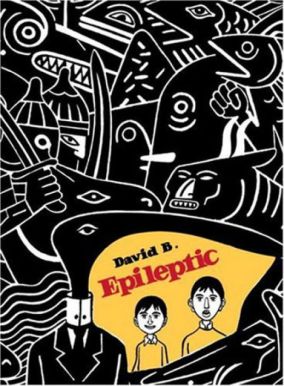
6. “Elfriede – en dystopi” (“Elfriede – a dystopia”) by Åsa Grennvall: Now here´s a graphic novel that would be a real challenge to adapt. “Elfriede”, unlike the other graphic novels on this list, does not tell a straight story. In fact this tale is entirely a character study. It follows a middle age woman named Elfriede, who is extremely cynical and bitter about the world. She takes us through her job where she condescendingly describes her boss (whom according to her shouldn´t be able to get his job done but somehow does), how she tries not to get involved when a female co-worker ask for comfort and advice regarding her physically abusive boyfriend (since Elfriede´s attempts to help her before only end up with the co-worker getting angry at Elfriede and going back to her boyfriend anyway), and how she hates her happy-go-lucky friend. She talks about her children, who she hopes don’t hate her as much as she hates her parents. Elfriede speaks frankly of how she is doing a countdown to her death and how she believes humanity is doomed due to it´s own ignorance. This story should fail, but due to Grennvalls gifted talents it is instead a work of genius in its unique concept and visualization. Elfriede’s life becomes fascinating in a tale where the reader is brought to understand Elfriede and dreadfully notices that Elfriede has legitimate points within the context of her life.
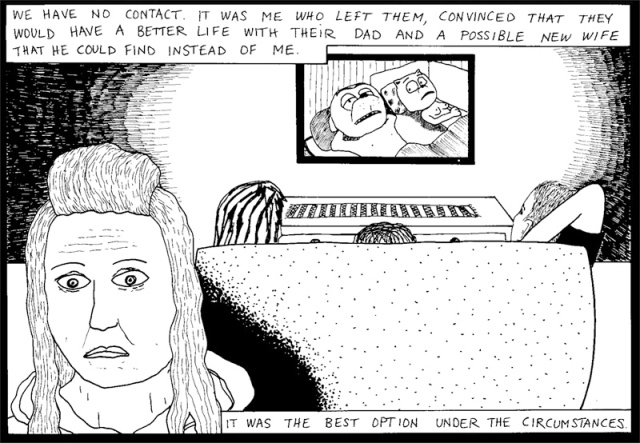
Bitterness is a very uncommon theme in fiction, which is a shame because, if used well, can make for a uncomfortably interesting read and an fascinating exploration of what we are in an indifferent world. “Elfriede – a dystopia” is a good testament of the many alternatives of life and our emotional responses to it, and a film adaption would make an interesting addition to the animated exploration of the existential.

7. “Smile” by Raina Telgemeler: Remember when you were a teenager who hated the way you looked? Well, then you should definitely read this graphic memoir “Smile”. This tale follows the struggles of the protagonist with her dental care, where, after an accident, her teeth need intensive management and repair. Raina feels painfully insecure about her reconstituted teeth, and her teeth become the focus of fear about being different from her fellow classmates. Raina faces a lot of peer pressure and frustration when growing up, while also feeling the pain of bracelets which engulf her teeth and expose her as different in the mere acts of smiling or talking.
This graphic novel is an honest memoir that shows Raina at times as unpleasant as the worst about her, but also as sweet and secure at the oddest of moments.

The best parts in the memoir, though, are the details about her friends, who, instead of being a reserve of comfort and connectedness, belittle and seem to find joy in bossing her about in her new outsider state. Though it takes time, as Raina grows older within the story, she acquires the strength to say no to her friends and in her blossoming confidence is even able to find less toxic friends.
This memoir is funny and very relatable and speaks to the growing pains that ring so true to many young girls and women. Now, with Young Adult film adaptation’s so popular, this tale, with its insightful teenage explorations, would make perfect sense to adapt to the filmic media. As an extra bonus, Ms. Telgemer has recently published another graphic memoir titled “Sisters”, which I for one can´t wait to read!

8. “Moomins: The policeofficer´s nephew” by Lars Jansson: Technically cheating since this is a comic strip, but this supposedly younger readers graphic tale would be an interesting and extremely brave adaptation. Over at Flavorwire this “storybook” is found listed this as one of the children´s books that deserve a re-boot, and indeed, while the cartoon show which was based on the books is good, it still lacks a lot of the more philosophical and political themes which the Moomin books are famous for. The comics, while not always as good, were at best as sharp as the original stories. Especially we can note this comic series springing from the originals, where the police officers nephew comes for a visit to Moomin valley and decides he suddenly wants to become a policeman himself. Unfortunately this leads to a slew of over-enthusiastic actions leading him to harangue and arrest the innocent populace of the tranquil valley. To thwart the worst of the Nephews actions his Uncle claims there is an illegal drug trade in Moominvalley, hoping this will distract him. Yet instead of diverting the authoritarian behavior of the nephew it only makes things worse.

This comic is as bizarre as it is funny and takes enormous risks, inside of this genre, in making references to both marijuana, cocaine as well as opium. Naturally, this comic is a critique of the social ideal of the police officer having definitive, unquestioned power within all encounters and situations, and of the drug panic which our society reacts to blindly (and criminalizes). While it can be argued that perhaps this comic is not exactly for young children, it still could pass for young adults and adults. The comic isn’t afraid of poking fun at authority while keeping the Moomins pure hearted and kind towards the misguided nephew. It is a truly odd, fun read and would most likely stir debate and laughter as a film.

Not from the same story line, but still funny!
9. “Army of God” by David Axe and Tim Hamilton: This is journalism in the form of comics, similar to the work of Joe Sacco (author of the classic “Palestine”). A little while back there was a lot of controversy over the video “Kony 2012”. Most reactions and opinions were spontaneous, though heartfelt, but few really got to get a clear picture of the ideology and actions perpetuated by the Kony “movement” in the Congo. In this comic, two journalists give a short introduction to the Congo´s modern history, what exactly the “Lord Resistance Army” (Kony´s terrorist group) is, about the international movement to stop “LDR”, and most importantly tells the story of few of Kony´s victims. It would be a great documentary film if adapted, and a much needed one, since it is hard to get real, concrete facts and information about the horrors LDR have committed.

10. Nearly the entire comic output of Nina Hemmingsson: Ms. Hemmingsson is a Swedish comic artist who has become famous for her short comics about a socially inept young woman. Her collected works include “I am your girlfriend now”, “My beautiful eyes” and “It´s hard to be Elvis in Uppsala”**. Her works are witty, dark and hilarious. Addressing gender stereotypes and norms, her work details in a personal and bizarre fashion telling of the tireless exploration of characters pushing against convention while continuing the battle of being themselves. In a film adaptation it would be a interesting experiment of following multiple story lines and situations, bursting with awesome social commentary.

For example, the story “I dated a Buddhist”*** is a sharp, funny commentary of white westerners who practice a form of “Buddhism”, simultaneously watering it down and not being entirely understanding about the real roots of the faith (i.e. committing cultural appropriation), all the while using their “enlightened faith” to elevate themselves amongst their peers and depress-shame others who inadvertently find themselves in their company. Another story depicts a young girl getting on a buss after a riding lesson. The driver makes a comment about all girls loving horses to which the young girl responds to gently point out that boys can also like horses and horse riding. This insight gets the young girl shut down in the conversation as soon as she indicates the sexist assumptions and absurdity of the discussion.

One of Hemmingssons strips……” The young man encourages the older woman to express herself, the woman conveys her frustration and suggests a sexual liasion between them. The man quickly notes that some self-censorship is still advised.”
A common core to the story arc of Hemingsson’s tales is the positioning of the weird and wondrous protagonist to reflect the conditions of real life in a melancholic yet hopeful way. In the end of the day, a film version of these kind of stories would be great. Who doesn´t need some laughter nowadays?
So there´s my list. What do you readers think? Any other comics/graphic novels/graphic memoirs you would like to see a film adaption of?
————————————————————————————————————————-
*For anyone interested, the very best comic/graphic novel adaptations done to date are “Persepolis” and the television adaptation of “The Boondocks” (specifically season 1 and 2).
 ** My own translations.
** My own translations.
*** My own translations.
